In 2014, the Govt of India used an innovative route to divest its stake in Central Public Central Enterprises – the CPSE ETF. The ETF tracks the Nifty CPSE Index and was launched in March 2014.
The Nifty CPSE Index currently holds 12 such CPSEs using criteria such as:
- Traded on the exchanges
- At least 51% Govt holding in promoter category
- Avg Free Float Market cap of at least Rs. 1000 crores in last 6 months
The index is rebalanced every quarter.
The top holdings in the index as of March 31, 2022 are:
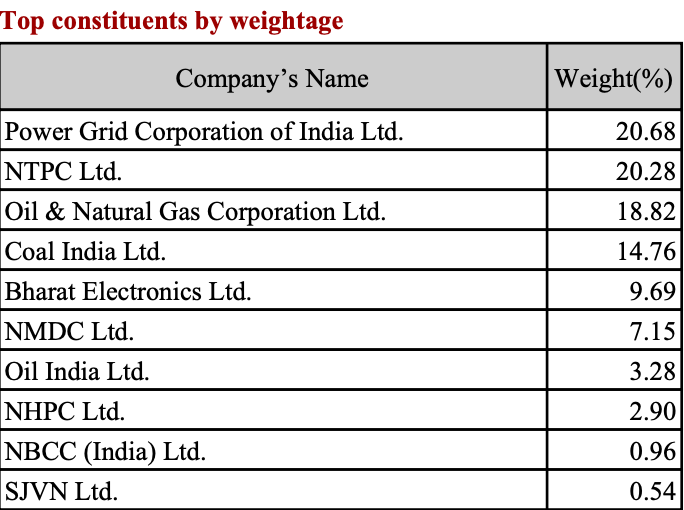
The top 3 stocks account for close to 60% of the allocations and the top 5 stocks close to 85%. The total no. of stocks in the index is 12. This makes it a very concentrated portfolio.
On a sectoral basis, Power gets a 45% weightage followed closely by Oil, Gas & Consumable fuels at 37%.
Basically, this Index can be safely renamed as the Central Power & Energy Index. 🙂
Let us look at the valuation factors of the CPSE ETF vs other Indices.
See the image below.
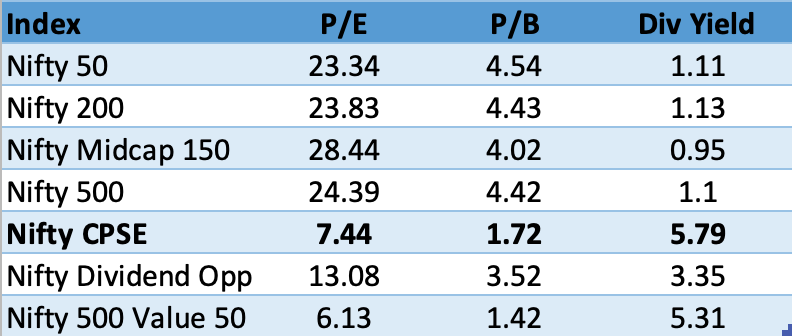
Nifty CPSE provides compelling valuation numbers. Against the broad market, the P/E, P/B as well as the Dividend Yield is attractive.
The numbers come to suggest that it is hard to lose money here.
Well, let’s look at the price performance.
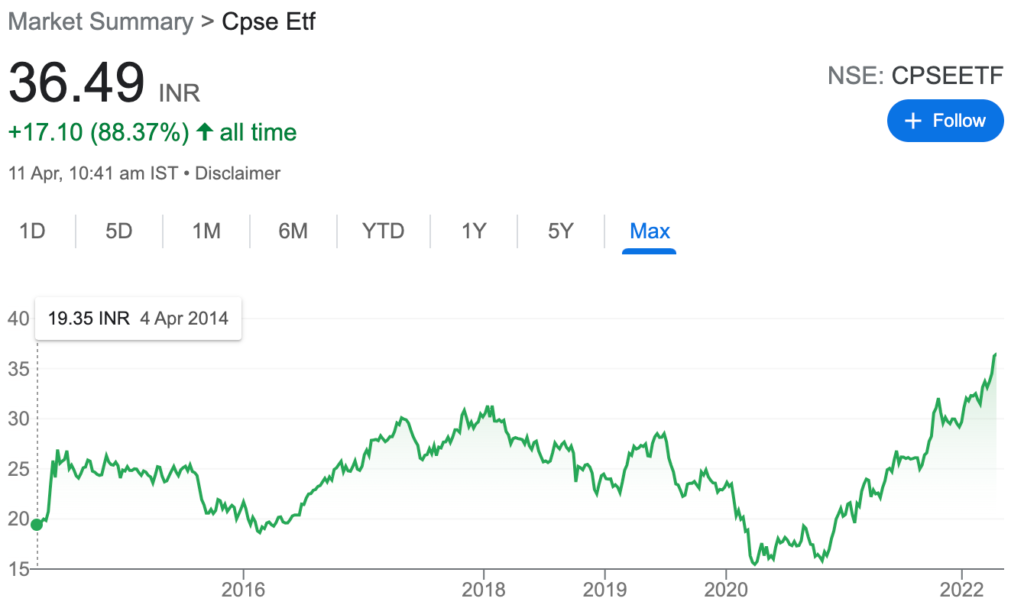
This one is a tough roller coaster. Since its listing, it has gained 88.37% over 8 years. That’s a CAGR of 8.2%. Mind you, this is the total price return including dividends reinvested.
On a 1 year rolling return basis (with monthly interval), here’s how the returns stack up.
- Median average 4.84%
- Max return 86.67% (Sept 2020 to Sept 2021)
- Min return – 41.6%. (March 2019 to March 2020)
As an ETF investor, the dividends go straight to the fund and not you. You need to sell units in the market for any income needs. The above chart does not inspire the condense to take that route.
So, why are we talking about the CPSE ETF?
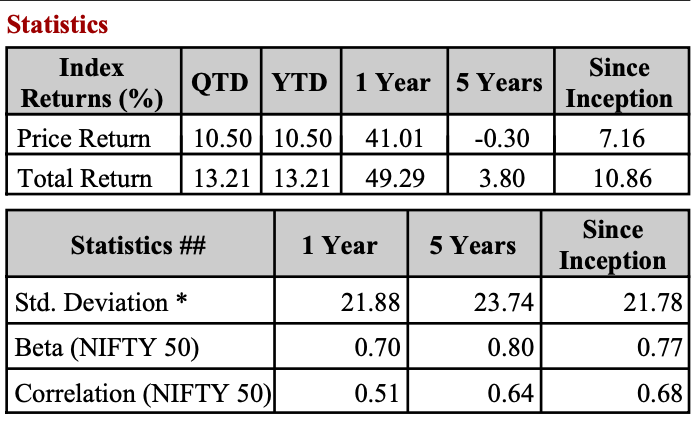
One of the interesting features of this ETF is the low correlation to the Nifty 50 Index. It means that there are times when the CPSE ETF can behave different to Nifty 50.
I suspect those periods will be far and few in between.
Here’s one in FY 2016-2017.
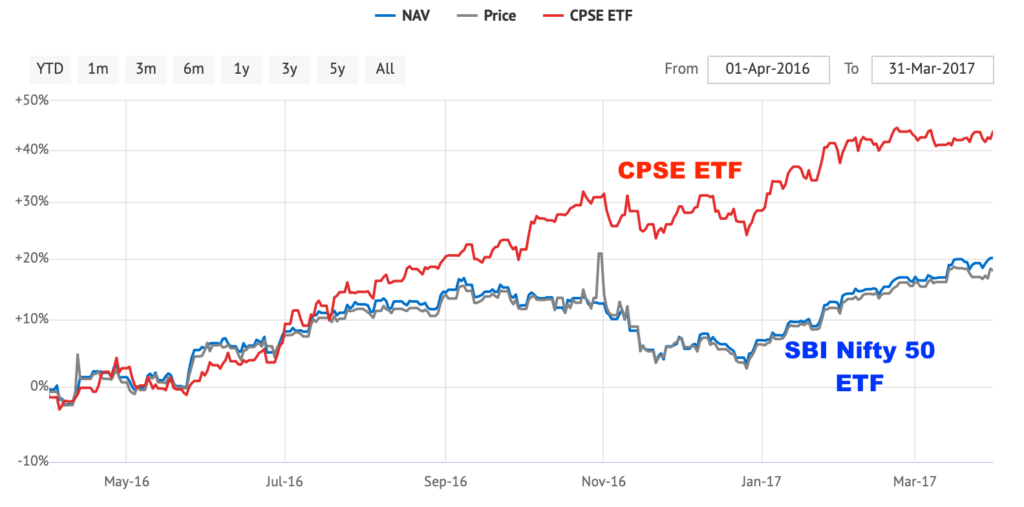
Another for the last 1 year.
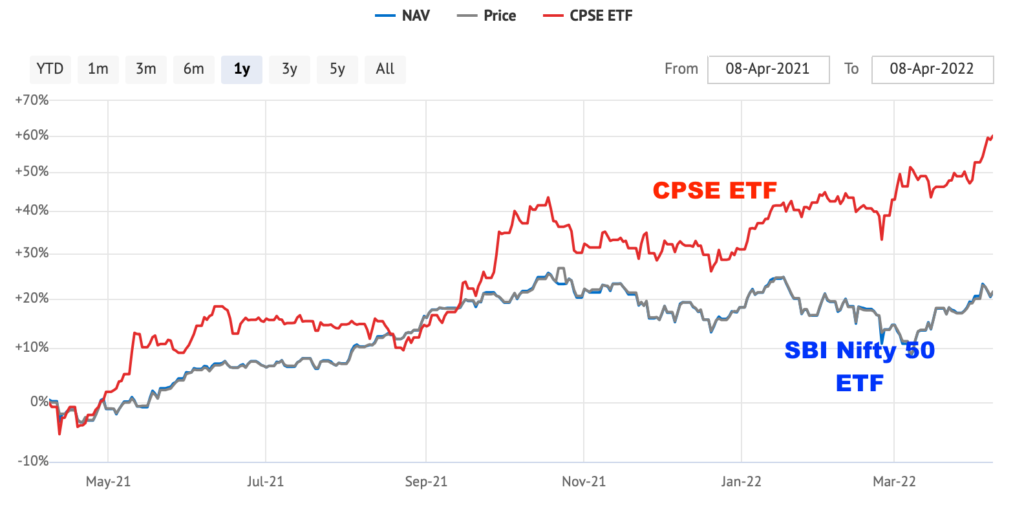
The question then is can an investor use this ETF tactically as a part of the portfolio?
Looks like. As I mentioned, standalone this ETF can carry a lot of pain. However, it may work as a part of a tactical allocation.
For example, currently, the CPSE ETF is a part of our WealthCase 30 portfolio on smallcase.
How do you invest in the CPSE ETF?
- As a retail investor, you can invest using your demat account on the NSE or BSE exchanges. You can buy as many units you want.
- If you are planning an investment of a large amount, you can also consider buying creation units directly from the AMC. The AMC offers you these units at NAV+expense ratio. However, you need to buy/sell a minimum of 1 lakh units (creation unit size). At current price of Rs. 36, it totals to about Rs. 36 lakhs.
Other facts: (Source: Tickertape)
- Market Cap: Rs. 21,740 crores
- Expense Ratio: 0.01 %
- Tracking Error: 0.23%
Disclosure: This article is only for information and is not investment advice. Unovest has a smallcase – WealthCase 30 portfolio. CPSE ETF is one of the current holdings.





[…] Click for Original Content Writer […]